You don’t have to agree with this idea to see that it represents a very different way of thinking about equality
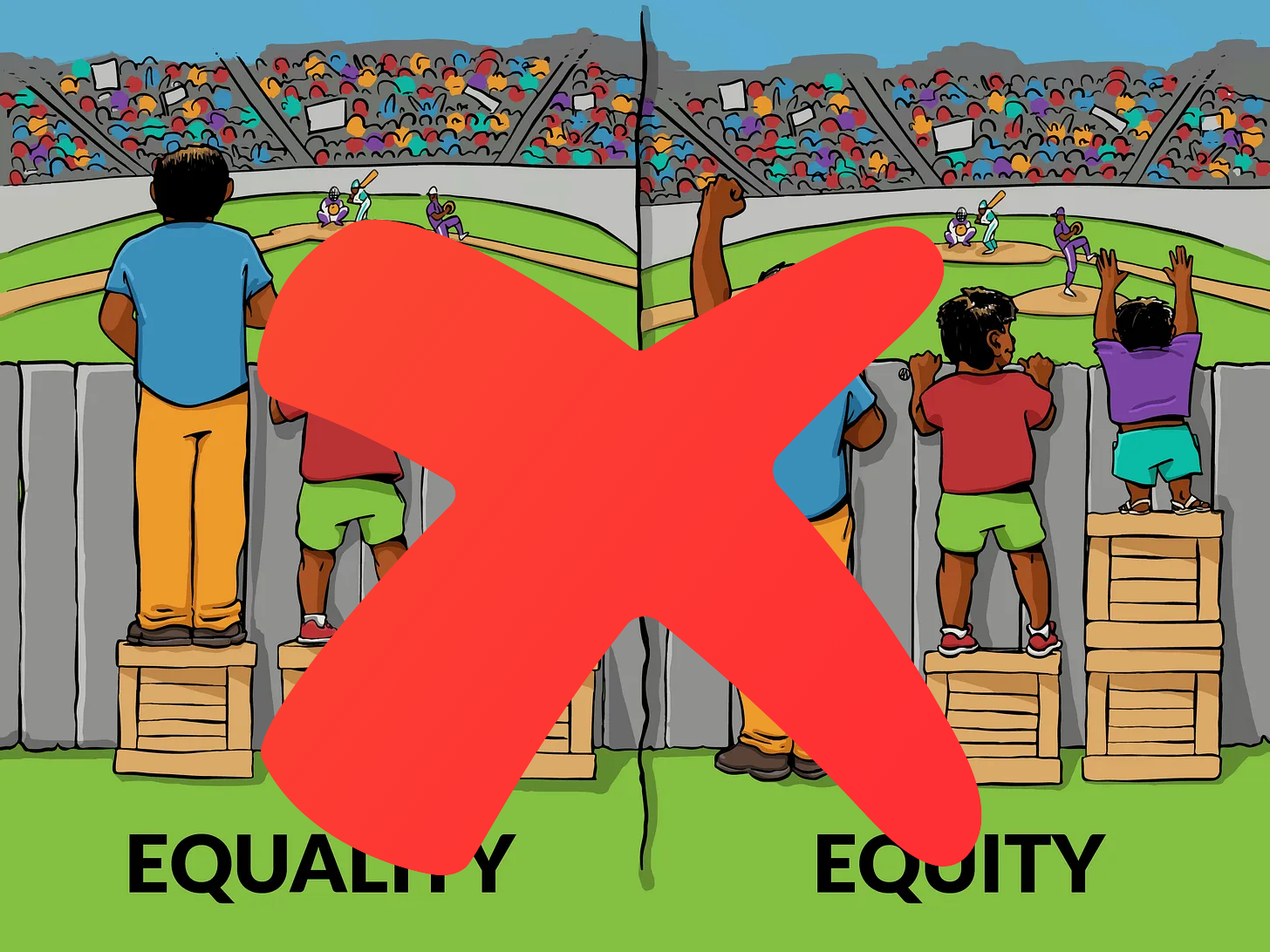
I’ve always been a bit uneasy about the above meme (to which I’ve added a red cross). Thankfully, due to link to a blog post by Rob Farrow I’ve discovered why. In fact, it’s possibly the reason why the whole DEI thing has been so contentious.
It shouldn’t need saying, but people don’t read carefully and aren’t used to reading beyond headlines these days. So before continuing of course I believe in equality. The issue is with the woolly concept of ‘equity’. The article I’m citing is by Joseph Heath, a Professor of Philosophy at the University of Toronto. He writes as you’d expect such a person to write: clearly, but assuming a bit of a background in Philosophy. Thankfully, yours truly does have that background and is here to help 😉
The purpose of any good model is to present a simplified representation of reality, in order to accentuate crucial features and make them more analytically tractable. The question, therefore, is whether the kids on boxes provide a useful model for thinking about the sorts of distribution problems that arise in DEI contexts. Most egalitarian philosophers, I think, would say that it is a bad model.
I’ve taken the quotations out of order because the overall argument makes more sense when presented this way. So we start from the position that the kids on boxes meme isn’t particularly useful.
The contrast that is drawn in the meme, which was originally intended to illustrate the distinction between “equality of opportunity” and “equality of outcome,” captures the way that people used to think about issues of equality up until the late 1960s, before the publication of John Rawls’s A Theory of Justice in 1971. After that, pretty much everyone came to agree that the opportunity/outcome distinction was neither useful nor coherent. The really important question was not when one chose to equalize, but rather what one intended to equalize.
So we need to figure out what we’re ‘equalising’ here. Is it the number of boxes? Or the quality of view?
The most immediate problem with the meme is that it does not present an accepted definition of the term “equity,” but rather a stipulative redefinition, which does not correspond very well to how the term has historically been used… [T]he graphic was originally drawn to illustrate the contrast between equality of opportunity and equality of outcome. Later on, after it was reproduced umpteen times, someone changed the labels, and somehow the idea that “equality of outcome” should be called “equity” stuck.
To recap: we’ve got an outdated notion of ‘equality of opportunity’ vs ‘equality of outcome’ which has been made even more problematic by the meme relabelling the latter as ‘equity’. It’s not a defensible philosophical position, partly because ‘equity’ doesn’t have a universally accepted definition, and is usually seen as a looser standard that strict equality.
My suspicion is that when DEI ideas were first taking shape, people gravitated toward “equity” language precisely because it had this looseness about it. Because people are different (i.e. diverse), one should not expect perfect equality, but rather just equity. And for all I know, this may have been what the person who modified the kids on boxes meme was thinking, suggesting that the allocation of boxes to kids should be responsive to the different characteristics of the kids. The unfortunate result, however, is that instead of introducing a looser standard of equality, the meme wound up saddling DEI with a commitment to an extremely strict, controversial conception of equality (i.e. equality of outcome), which no reasonable person actually endorses as a general principle. Furthermore, this was not achieved through argument, but merely through persuasive definition.
And this, dear reader, is why Philosophy is such an important subject. If you don’t get these kinds of things right, then it has downstream implications. ‘Equity’ might seem like a reasonable thing to aim for, but if you don’t know what it means, then you’re going to run into trouble.
Setting aside these terminological issues and focusing on equality of outcome, the next big problem with the meme is that it commits DEI proponents to a conception of equality that is somewhere to the left of the most left-wing view defended by left-wing philosophers. Indeed, one of the major objectives of theorists in the “equality of what?” debate was to reformulate egalitarianism in such a way as to avoid the obvious objections to the simple-minded conception of equality of outcome that used to prevail in public debates (and that is represented nicely in the meme).
The ‘obvious objections’ mentioned above are things like people who have made poor choices in life. For example, intuitively, we don’t think that people who have made poor choices in life should be treated the same as those who have wound up with less because of circumstances beyond their control.
[Philosophers] took the choice/circumstance distinction and turned it into the fundamental justification for egalitarianism, arguing that our most basic reason for caring about equality is our desire to neutralize the effects of bad luck. According to this view, when we look at the kids on boxes meme and agree to take the box away from the tall guy and give it to the short kid, the reason we make this judgment is because height is an unchosen characteristic – it’s not the short kid’s fault that he’s short. The idea is not that everyone should get exactly the same outcome, but that we should not be allowing unchosen differences between persons to determine outcomes.
Framed like that, DEI would apply across the board, to people who face inequality through no fault of their own. It’s a shame that we took a meme-based approach to policy rather than a philosophical one. But then, we live in 2025 where only a small proportion of people are willing to take a nuanced view.
You don’t have to agree with this idea to see that it represents a very different way of thinking about equality. And from this perspective, the problem with the meme is that it dredges up an old, discredited view of equality, that can easily be undermined just by pointing to cases where individuals wind up with less because of choices they have made. A lot of the excitement generated by luck egalitarianism was based on the perception that we had overcome a significant error in thinking about equality, and could now move on to discussion of more defensible conceptions. And yet all it took was a single meme to turn back the clock by 50 years!
Source: In Due Course
Image: Modified from an original used in the above blog post.
I’m 100% positive people are going to talk to their cars
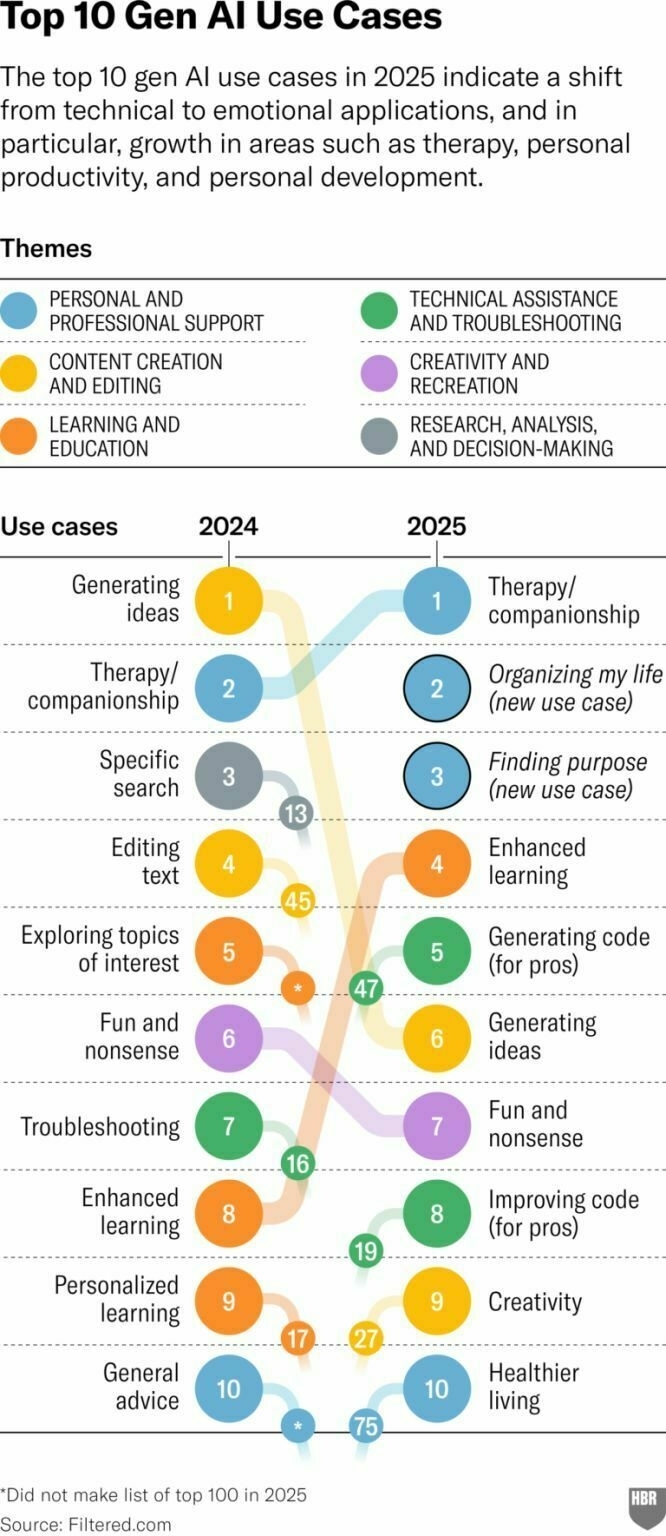
We live in the midst of a loneliness epidemic, especially for men. A recent Harvard Business Review article showed the difference between what people said they were using AI for this year, and compared to 2025.
“Generating ideas” has gone from first to sixth place, and “Therapy/companionship” has moved from second to first place. “Finding purpose” is a new use case coming straight in at third. There’s a paywall on the HBR article, so you can find the report here. Note that this was, in the words of the author, Marc Zao-Sanders, “a rigorous, expert-driven curation of public discourse, sourced primarily from Reddit forums.” No methodology is provided.
That being said, I’m using the report by way of introduction to the following extract from an article by Jay Springett, who reckons soon everybody will be talking to their car. I mean, I already talk to my Polestart 2 as it has Google Assistant built in, but he means talking in a deep and meaningful way.
For me, this is a case of not if, but when. It’s going to challenge notions of privacy, but also intimacy, infidelity, and loss (when providers inevitably shut down a service).
Consider the average American commuter: 60 minutes a day, mostly alone, in the car. The vehicle as liminal space. Neither home nor work. Private and intimate. I’m 100% positive people are going to talk to their cars. First for fun. Then for directions. Then about their lives. Their feelings. Their grief, their divorce.
And now that OpenAI has also introduced Memory (at least in the US) the car might remember everything you’ve ever told it. 😬
There’s a meaning crisis going on, which means there is a gaping emotional void waiting to be filled by a good listener that’s found in the safety of a car. Some people, especially men, already love their cars. What happens when the car appears to care for them back?
Her becomes a lot more plausible when the AI you fall in love with is also a car.
Source: thejaymo
Image: (shared by various people on LinkedIn)
End times fascism is a darkly festive fatalism
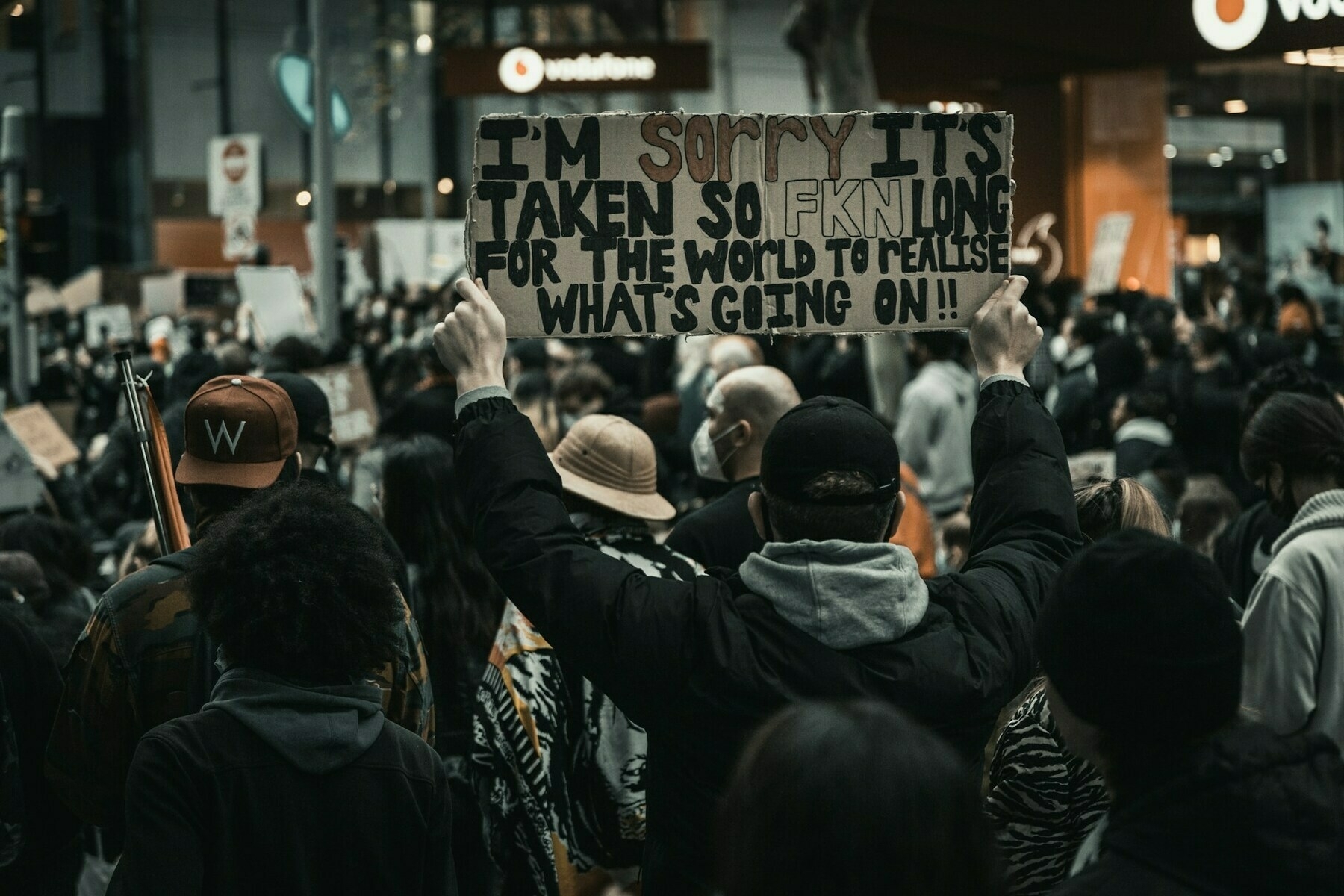
It’s long, so I’ve provided a proportionally-long excerpt, but it really is worth taking the time to read this article by Naomi Klein and Astra Taylor about “end times fascism.” It’s a worldview that is simultaneously conspiratorial, eschatological, and profoundly anti-democratic.
I’m glad I don’t live in the USA at the moment, but I think we’re kidding ourselves if we don’t think that this kind of worldview isn’t aiming to capture a country like the UK soon. Carving up the world into multiple oligarchies suits rich people just fine. And the world can burn so long as they have air conditioning and a rocket ride outta here.
Inspired by a warped reading of the political philosopher Albert Hirschman, figures including Goff, Thiel and the investor and writer Balaji Srinivasan have been championing what they call “exit” – the principle that those with means have the right to walk away from the obligations of citizenship, especially taxes and burdensome regulation. Retooling and rebranding the old ambitions and privileges of empires, they dream of splintering governments and carving up the world into hyper-capitalist, democracy-free havens under the sole control of the supremely wealthy, protected by private mercenaries, serviced by AI robots and financed by cryptocurrencies.
[…]
The startup country contingent is clearly foreseeing a future marked by shocks, scarcity and collapse. Their high-tech private domains are essentially fortressed escape pods, designed for the select few to take advantage of every possible luxury and opportunity for human optimization, giving them and their children an edge in an increasingly barbarous future. To put it bluntly, the most powerful people in the world are preparing for the end of the world, an end they themselves are frenetically accelerating.
[…]
Our opponents know full well that we are entering an age of emergency, but have responded by embracing lethal yet self-serving delusions. Having bought into various apartheid fantasies of bunkered safety, they are choosing to let the Earth burn
[…]
Listen to Steve Bannon’s daily podcast – which bills itself as Maga’s premier media outlet – and you will be barraged with a singular message: the world is going to hell, the infidels are breaching the barricades, and a final battle is coming. Be prepared. The prepper message becomes particularly pronounced when Bannon switches to hawking his advertisers’ products. Buy Birch Gold, Bannon tells his audience, because the over-leveraged US economy is going to crash and you can’t trust the banks. Stock up on ready-to-eat meals from My Patriot Supply. Sharpen your target practice using a laser-guided at-home system. The last thing you would want to do is depend on the government during a disaster, he reminds listeners (left unsaid: especially now that the Doge boys are selling off the government for parts).
Bannon doesn’t only urge his audience to make their own bunkers, of course. He also advances a vision of the United States as a bunker in its own right, one in which Ice agents stalk the streets, workplaces and campuses, disappearing those deemed enemies of US policy and interests. The bunkered nation lies at the heart of the Maga agenda, and of end times fascism. Inside its logic, the first job is to harden national borders and expunge all enemies, foreign and domestic.
[…]
As fascism always does, today’s Armageddon complex crosses class lines, bonding billionaires to the Maga base. Thanks to decades of deepening economic stresses, alongside ceaseless and skillful messaging pitting workers against one another, a great many people understandably feel unable to protect themselves from the disintegration that surrounds them (no matter how many months of ready-to-eat meals they buy). But there are emotional compensations on offer: you can cheer the end of affirmative action and DEI, glorify mass deportation, enjoy the denial of gender-affirming care to trans people, villainize educators and health workers who think they know better than you, and applaud the demise of economic and environmental regulations as a way to own the libs. End times fascism is a darkly festive fatalism – a final refuge for those who find it easier to celebrate destruction than imagine living without supremacy.
[…]
Three recent material developments have accelerated end times fascism’s apocalyptic appeal. The first is the climate crisis. While some high-profile figures might still publicly deny or minimize the threat, global elites, whose ocean-front properties and datacenters are intensely vulnerable to rising temperatures and sea levels, are well-versed in the ramifying perils of an ever-heating world. The second is Covid-19: epidemiological models had long predicted the possibility of a pandemic devastating our globally networked world; the actual arrival of one was taken by many powerful people as a sign that we have officially arrived at what US military analysts forecasted as “the Age of Consequences”. No more predictions, it’s going down. The third factor is the rapid advancement and adoption of AI, a set of technologies that have long been associated with sci-fi terrors about machines turning on their makers with ruthless efficiency – fears expressed most forcefully by the same people who are developing these technologies. All of these existential crises are layered on top of escalating tensions between nuclear-armed powers.
So, er, what do we do about all this?
First, we help each other face the depth of the depravity that has gripped the hard right in all of our countries. To move forward with focus, we must first understand this simple fact: we are up against an ideology that has given up not only on the premise and promise of liberal democracy but on the livability of our shared world – on its beauty, on its people, on our children, on other species. The forces we are up against have made peace with mass death. They are treasonous to this world and its human and non-human inhabitants.
Second, we counter their apocalyptic narratives with a far better story about how to survive the hard times ahead without leaving anyone behind. A story capable of draining end times fascism of its gothic power and galvanizing a movement ready to put it all on the line for our collective survival. A story not of end times, but of better times; not of separation and supremacy, but of interdependence and belonging; not of escaping, but staying put and staying faithful to the troubled earthly reality in which we are enmeshed and bound.>
We have reached a choice point, not about whether we are facing apocalypse but what form it will take. […]
To have a hope of combating the end times fascists […] we will need to build an unruly open-hearted movement of the Earth-loving faithful: faithful to this planet, its people, its creatures and to the possibility of a livable future for us all. Faithful to here.
Source: The Guardian
Image: Arctic Qu
Nobody should have to pay to be safe while using a computer
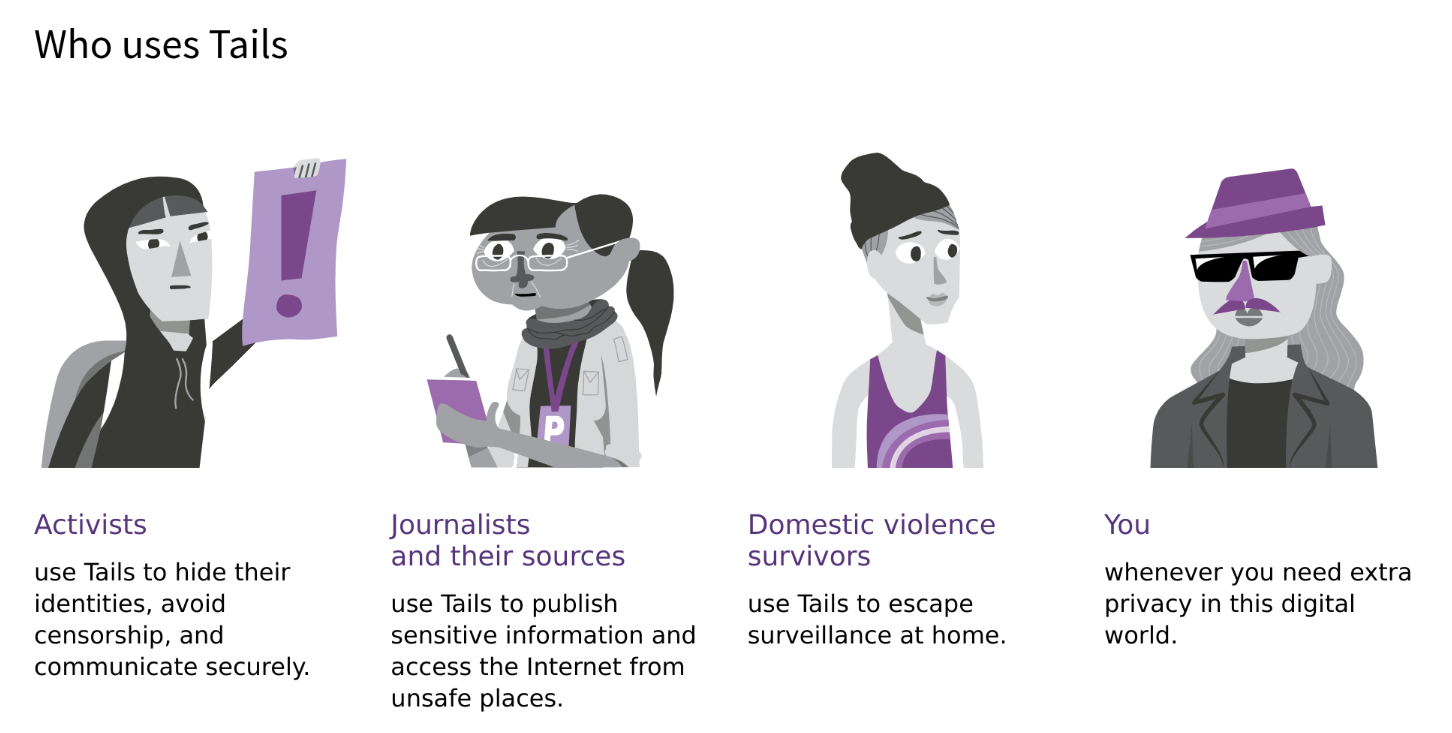
Yesterday, as happens on a regular basis, there was an update to Tails, “the amnesiac incognito live system.” I mention this because much of our digital life is online, and many of the systems we use are not only hostile to users, but are backed by organisations with links to authoritarian regimes and surveillance capitalism.
If I was travelling to China, the US, or Russia, or indeed was a citizen of countries with authoritarian tendencies, this would be what I’d be using to cover my back. As Cardinal Richelieu famously said, “Give me six lines written by the most honest man in the world, and I will find enough in them to hang him." These days, our digital footprint gives people with a grudge, an axe to grind, or a particular agenda, _much_more than “six lines”. Protect yourself proactively.
To use Tails, shut down the computer and start on your Tails USB stick instead of starting on Windows, macOS, or Linux. You can temporarily turn your own computer into a secure machine. You can also stay safe while using the computer of somebody else.
Tails always starts from the same clean state and everything you do disappears automatically when you shut down Tails.
Tails includes a selection of applications to work on sensitive documents and communicate securely. All the applications are ready-to-use and are configured with safe defaults to prevent mistakes.
Everything you do on the Internet from Tails goes through the Tor network. Tor encrypts and anonymizes your connection by passing it through 3 relays. Relays are servers operated by different people and organizations around the world.
Tor prevents someone watching your Internet connection from learning what you are doing on the Internet. You can avoid censorship because it is impossible for a censor to know which websites you are visiting.
Tor also prevents the websites that you are visiting from learning where and who you are, unless you tell them. You can visit websites anonymously or change your identity. Online trackers and advertisers won’t be able to follow you around from one website to another anymore.
All the code of our software is public to allow independent security researchers to verify that Tails really works the way it should.
Nobody should have to pay to be safe while using a computer. That is why we are giving out Tails for free and try to make it easy to use by anybody. Tails is made by the Tor Project, a global nonprofit developing tools for online privacy and anonymity.
Source & image: Tails
AI Literacy without power analysis is just compliance training
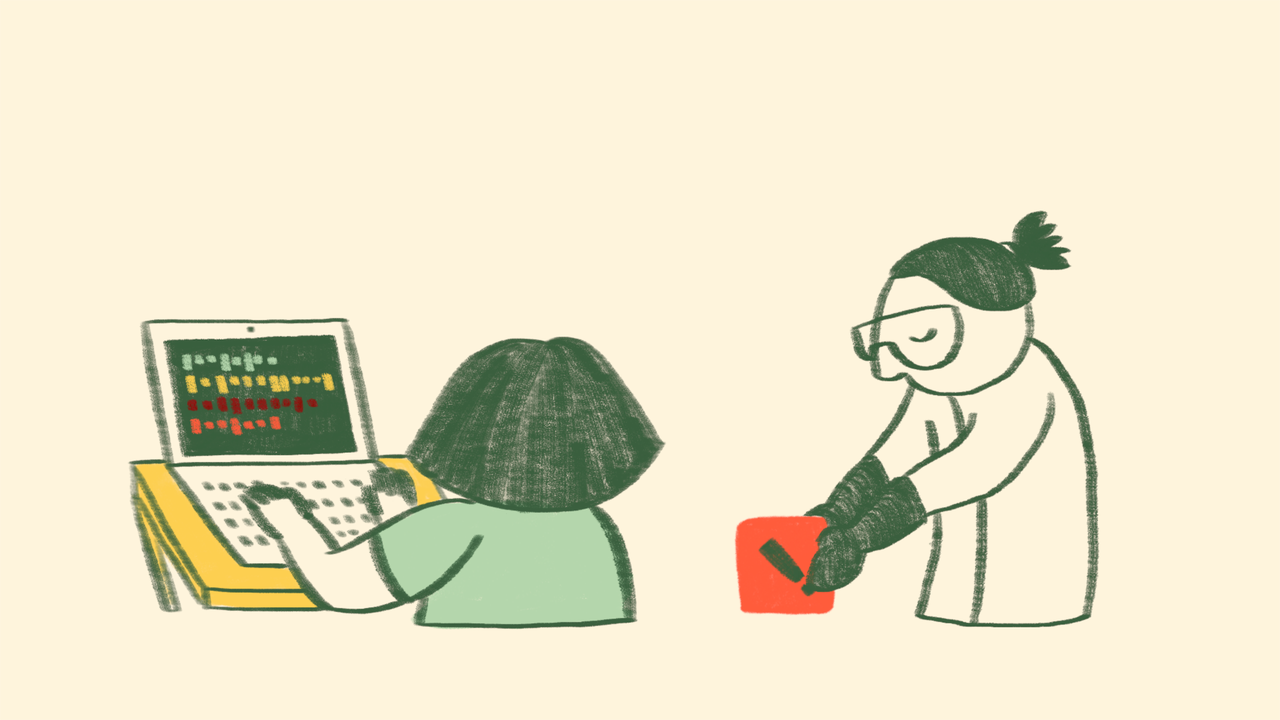
I’m working on an AI Literacy project with the BBC at the moment. I haven’t given many details of this anywhere, as they need to socialise internally that the work is happening first. But I’m really enjoying getting my teeth back into the new literacies space.
For years now, I’ve included in my presentations the fact that when you define ‘literacy’ you’re making a power move. You’re either explicitly or implicitly saying what counts as “literate behaviour.”
That’s why I’m in agreement with James O’Hagan’s position in this article. It chimes the point I made earlier this week about it being a good thing that young people are using AI for their own ends. They need a space to push back at simple ‘compliance training’ on how to use tools, to develop critical AI Literacies (plural!)
There is a reason why the dominant models of AI literacy being promoted to schools feel so hollow. They focus on functionality, not freedom. They train students to use the tools, not challenge the systems. They offer guardrails, not agency.
In one of my Medium pieces, I argued that we are designing AI literacy to make education compliant, not smarter. That is still the case. What often gets labeled “AI education” is really just exposure — watching a tool work, seeing a demo, reading a definition. For example, I completed all five MagicSchool AI certification courses in under 15 minutes — without ever logging in or using the platform. That says more about the training than it does about the tool.
Very little of this equips students to intervene. To resist. To build differently.
We need AI literacy that makes students dangerous thinkers, not docile users.
[…]
Let students ask who funds the tools. Who sets the limits. Who benefits. Let them critique the platforms that shape their school day. Let them design alternatives rooted in their experiences. And let us stop pretending that integration is progress if the terms are dictated from the outside.
We can — and must — teach the technical. But we should not stop there. We need to lift the hood, yes. But we also need to ask why the engine was built in the first place, who it leaves behind, and where it refuses to go.
The way we talk about AI in education will shape the way we teach it. If we treat it like magic, we will mystify. If we treat it like software, we will standardize. But if we treat it like a political, social, and ethical terrain, we will start to give students the tools to navigate it — and challenge it.
Source: James O’Hagan
The world is a built environment

Dan Sinker uses this blog post to discuss US politics and the systematic dismantling of important infrastructure. But I’m interested in the wider framing of understanding that you can take things apart, literally and figuratively. As Steve Jobs said, everything around you that you call life was made up by people that were no smarter than you.
Most everything I know, I know because I took something apart.
I mean that literally: I’ve cut and I’ve unscrewed and I’ve pried and I’ve desoldered to get inside electronics and appliances. And I mean it figuratively: I read the source code for web pages to build my own, I’ve deconstructed writing to make myself better at it, I’ve mapped entire audio stories with pen and paper to understand how to assemble them myself.
If I want to really understand something, I have to understand all the pieces that went into making it come together.
[…]
Everything can be taken apart, and every step of the process is an opportunity to learn.
The world is a built environment, and I think understanding how it was built is key to being able to truly live in it.
Source: Dan Sinker
Image: KAT
It will be increasingly difficult to preserve the illusion that any government could solve the problems of capitalism

Adam Procter sent me this video which explains the ‘squeeze out’ that’s been happening over the last 30 years or so. It happens in five stages:
- The rich start to accumulate more money, as they are not taxed enough. They buy up assets, out-competing the working classes for resources, and driving them into debt.
- The working classes have run out of money and cannot borrow or spend any more, so there is an economic depression and a crisis. So the government has to step in.
- The government starts to run out of resources as well, so borrows from (or enters into public-private partnerships with) the rich.
- The government has no choice but to slowly eviscerate the middle classes. Eventually there is no wealth left other than that held by the rich, meaning that the physical structure of society changes so that it only supports consumption by them.
- There is no-one left to squeeze. The rich own everything, and the only way they can try and grow their wealth is by sending people to fight in wars against each other.
Like Cory Doctorow’s three stages of enshittification it’s a useful overview of a process that would otherwise be difficult to pin down. Is it 100% accurate everywhere and all of the time? No, probably not, but it’s a useful framing.
Given the absolute destruction of the world and dismantling of civil society that’s happening at the moment, I’m a little bit less reticent to state that I’m an anarchist. Not like the ridiculous caricature of anarchists as terrorists and in books like The Man Who Was Thursday by G.K. Chesterton (which is otherwise an enjoyable novel). Nor am I out there actively fermenting trouble. But that broadly libertarian socialist angle is my starting position for understanding how the world should be.
If there was ever a time to be reading more revolutionary stuff, it’s now. So I’m pointing you towards Crimethinc. “a rebel alliance—a decentralized network pledged to anonymous collective action—a breakout from the prisons of our age.”
The future may hold neoliberal immiseration, nationalist enclaves, totalitarian command economies, or the anarchist abolition of property itself—it will probably include all of those—but it will be increasingly difficult to preserve the illusion that any government could solve the problems of capitalism for any but a privileged few. Fascists and other nationalists are eager to capitalize on this disillusionment to promote their own brands of exclusionary socialism; we should not smooth the way for them by legitimizing the idea that the state could serve working people if only it were properly administered.
[…]
Rather than seeking state power, we can open up spaces of autonomy, stripping legitimacy from the state and developing the capacity to meet our needs directly. Instead of dictatorships and armies, we can build worldwide rhizomatic networks to defend each other against anyone who wants to wield power over us. Rather than looking to new representatives to solve our problems, we can create grassroots associations based in voluntary cooperation and mutual aid. In place of state-managed economies, we can establish new commons on a horizontal basis. This is the anarchist alternative, which could have succeeded in Spain in the 1930s had it not been stomped out by Franco on one side and Stalin on the other.
[…]
As the crises of our era intensify, new revolutionary struggles are bound to break out. Anarchism is the only proposition for revolutionary change that has not sullied itself in a sea of blood. It’s up to us to update it for the new millennium, lest we all be condemned to repeat the past.
Source: Crimethinc.
That's a rather laughable fine, frankly

A couple of months ago, a report that Laura and I wrote for Friends of the Earth was published. Focusing on AI and environmental justice, in collaboration with experts and campaigners, we came up with seven principles:
- Curiosity around AI creates opportunities for better choices.
- Transparency around usage, data and algorithms builds trust.
- Holding tech companies and governments accountable leads to responsible action.
- Including diverse voices strengthens decision making around AI.
- Sustainability in AI systems helps reduce environmental impact and protect natural ecosystems.
- Community collaboration in AI is key to planetary resilience.
- Advocating with an intersectional approach supports humane AI.
That third point is really important, and as this article shows, merely fining tech companies isn’t enough.
Apparently, Elon Musk’s company xAI is using methane-burning gas turbines to fuel over a data centre at a site in Tennessee. As the generators are classed as ‘portable’ they can be used for up to 364 days. At the time of writing, xAI only has permits for the use of 15 generators, but they’re currently using 35. That’s terrible for the environment.
The proximity of powerful tech companies to right-wing authoritarianism is one of the reasons we ended up with the Holocaust. In a recent newsletter, Audrey Watters pointed to this article where the authors introduce the TESCREAL bundle (“transhumanism, Extropianism, singularitarianism, (modern) cosmism, Rationalism, Effective Altruism, and longtermism”). They consider these beliefs to be “direct descendants of first-wave eugenics.” Plenty of concepts to look up there, but the TL;DR is that “much of the billionaire funding for projects focused on AGI comes from wealthy individuals aligned or explicitly affiliated with one or more of these ideologies.”
Last year it turned out that Elon Musk’s xAI had to install additional ‘portable’ generators near its facility adjacent to Memphis, Tennessee, to power the Colossus supercomputer with over 100,000 Nvidia H100 GPUs as local power grid could not support the load. The Southern Environmental Law Center contends the generators are “illegal,” yet they can keep running, reports The Guardian.
[…]
The law center stated in a letter that these generators are a major pollution source and breach federal air quality rules, including emissions of hazardous and cancer-causing substances. They demanded that the local health agency issue an emergency halt to the operations and fine the company $25,000 for every day it continues to run them without proper authorization.
That’s a rather laughable fine, frankly. The 100,000 H100 GPUs in the xAI Colossus would cost about $2.5 billion on their own — never mind the rest of the data center infrastructure and hardware. $25,000 per day would amount to just $9.1 million per year. Providing 150MW of electricity, 24/7, on the other hand, even at a price of $0.05 per kWh (we’re not sure what xAI pays to run the portable generators) would be about $180,000 per day.
Source: Tom’s Hardware
Image: Logan Voss
It’s incredibly hard to politely reply whilst still walking briskly
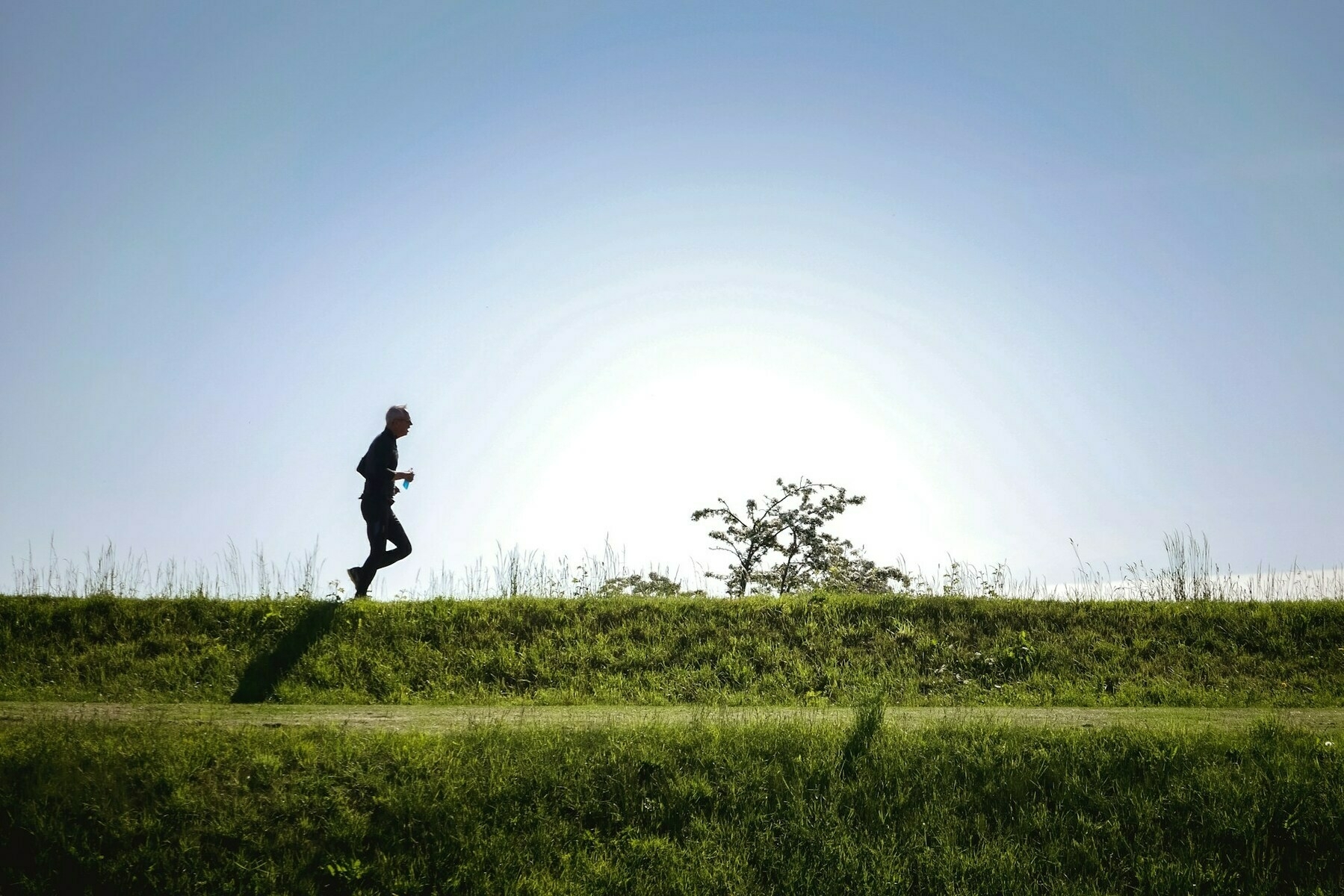
I enjoyed reading this blog post from Simon Wolf, who, in his fifties, has decided to change his lifestyle and become fitter. He seems to have been prompted by thoughts about his own mortality, and discovering the YouTuber Ryan Condon who halved his weight from 190kg to 95kg by walking, running, and cycling.
Simon talks about three things: the gear required (get decent running shoes!), the technology he uses to track his exercise, but — perhaps most importantly — the mental side of things. That’s not just “getting out there” and having the motivation to do something, but getting over ourselves thinking that people are paying more attention to us than they actually are.
Having been active most of my life, it’s only very recently that I’ve struggled with this. My recent heart condition has meant that I’ve only this week run outside again for the first time in about three months. Of course, I’m running a lot slower than I used to, and virtually walking up hills, which made me a bit self-conscious.
But of course nobody cares. I’m just another middle-aged guy moving past people’s fleeting consciousness. Even if they do recognise me, at least I’m out there, trying.
As someone who is new to exercise and who is very self-aware about their lack of fitness and ability, just stepping out of my front door to go and do the first session was intimidating. What if people laugh at me? What if I can’t do any of it and give up after a few minutes? What if I can’t run at all? What happens if I see someone I know? The doubts go on and on. But I had picked a day, the 31st of March, and I was determined to stick to it. Worse case, I could pretend that I was out for a walk in some slightly unusual clothing for me.
So at around 6pm I walked up to the recreation field in the village where I live. The warm-up is a walk so this was fine. And the field was largely empty apart from a few young children playing and a joyous sight… someone doing some intermittent walking and running which was very possibly someone else doing Couch to 5K. Suddenly it all felt a bit more possible. But even without that I was remembering the words that “doing something is better than doing nothing” and I was indeed doing something and I felt empowered by it.
In the four sessions I have done since then I have had two where the field was essentially empty, one where some ladies walking their dogs asked me what I was doing (it’s incredibly hard to politely reply whilst still walking briskly), and one where the field was part-filled with a kids football club and, inevitably, their parents all watching. But I walked and ran regardless and nobody shouted anything at me and after a little while I zoned them all out and just got on with what I was doing. I survived and it didn’t put me off doing it all again. In fact, this week I was a bit sad that I’d done my run a little earlier and missed my, presumably appreciative, audience.
Source: Simon Wolf’s Blog
Image: Marcel Ardivan
800 m² of communal space are hidden behind the facades of reclaimed wood

This week I attended a STEPS Collective monthly meetup where the topic was Money. It was a really well-run session by Esther Hayes Grossman and included the first example I’ve seen of people silently voting on a topic by turning on their video in response to a prompt.
During the discussion, one participant shared details of ‘De Warren’ in Amsterdam as an example of something that “makes no sense” to real estate people because there’s no profit motive involved. It made me think how interesting it would be to live in such a space — check out that ‘Macchu Picchu’ stairway!
Having lived on a small row of terraced houses for nine years prior to moving to where we currently live, what I miss are the serendipitous moments of bumping into neighbours and having a chat in the shared back lane. I think we all need more of that in our lives, to build solidarity. It’s all well and good thinking about online social spaces, but we are embodied, social creatures.
At the De Warren newbuild by a housing cooperative on the outskirts of Amsterdam, 36 affordable rental apartments and about 800 m² of communal space are hidden behind the facades of reclaimed wood.
[…]
The architects determined the building’s spatial programme with the members of the cooperative in four workshops. Thirty percent of the space in the house – i.e. about 800 m² – is set aside for communal rooms distributed on all storeys.
[…]
The building’s collage-like facades differ it quite considerably from its neighbours. The outer cladding in reclaimed wood is just the most visible characteristic of a comprehensive sustainability concept. This includes 30-m ground piles to which piping has been added, meaning they thus serve as geothermal heat exchangers for the heat pump that supplies the house with heat. The electricity for the heating is provided by a photovoltaic panel array on the roof. Altogether the building has an EPC rating of 0,16 according to Dutch energy regulations and is thus “energy-positive”.
The glazed lounge at the corner of the building marks the start of a continual staircase – called the Macchu Picchu stairway by the architects – that connects the numerous communal spaces scattered through the house, such as the children’s playroom, a music studio, several co-working offices, a meditation room, a shared roof terrace with greenhouses and several communal kitchens.
Source: DETAIL
Thought Shrapnel podcast: Episode #000
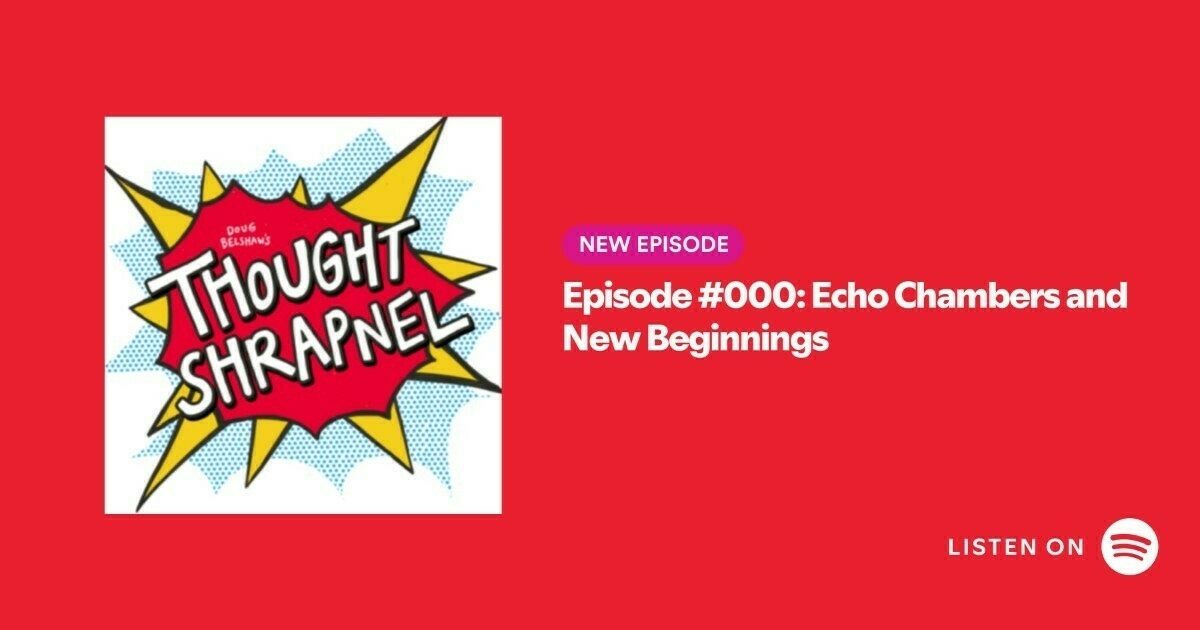
While the rest of Team Belshaw was doing such novel things as socialising, working, and watching TV on Friday night I decided to break out my microphone and record a solo podcast episode. Weighing in at around 20 minutes, I couldn’t in all honesty call it a ‘microcast’, so I ended up publishing using Spotify’s creator tools.
Yes, there’s an RSS feed. Is this something I want to do regularly? Is it something people want to hear? I don’t know. Perhaps I need a CONTENT STRATEGY. (I do not need a content strategy.)
We are absolutely cooked
Someone shared a link to this Instagram video in which the person on the video claims:
A friend’s daughter fed her mom’s voice to AI and then used it to get out of school to hang with her friends. She also used it to have her friends sleepover. We are absolutely cooked.
I applaud this novel use of technology by the girl. It’s not much different to my son trying to forge my signature so that I didn’t find out about his detention.
Or, indeed, me using my dad’s credit card in 1996 when I wasn’t allowed on the internet. I started sequential month-long trials with Compuserve and AOL, going to the phone box at the end of the street to call the company, pretend to be my dad, and cancel the accounts.
Yes, I get that all of this AI stuff makes it easier to scam people, but then technology has always been an arms race. Knowing how to look for the signs of what’s real and what’s fake is, therefore, a part of AI Literacy.
The rapture is not something we wait for. It's something we do.
Great stuff from Dan Meyer here. Even if he is representing an edtech company, he’s got more integrity in his little fingernail than many vendors.
I’m telling you, everybody, the problems stay the same. Every year, every decade, every new technology, the problems stay the same.
Figure out how to get along. Figure out how to share the surplus of what we build. Figure out who needs what and why they don’t have it. Figure out how to help people see that we see their value. No technology will ever change any of these unalterable challenges of human existence.
And I get it, they’re hard. It’s work. It’s also life. It’s the work of a lifetime. And I get why many people want a technological cheat code, an easy button, a rapture. But none’s coming. We’re stuck with us, people, the cause and solution of all of our problems. And new technologies can play a part, but only if we start with what people need. Teachers and students need content, sure, but especially connection.
The rapture is not something we wait for. It’s something we do.
Source: YouTube
What IPAs do you guys have on draft?

I’m a Xennial who identifies much more with Millennial culture than with Gen X. In his new column for VICE, Drew Austin (of Kneeling Bus fame) talks about the end of Millennial culture coinciding with us coming out blinking from pandemic-induced lockdowns.
It’s a fair point. I’m 44 and the youngest Millennials are around 30 years old. Popular culture belongs to people in their teens and twenties, mostly, which means that what we thought was cool and hip is now old and stale. I quite enjoyed reading this on my sticker-covered laptop while listening to music from the early 2000s on my iPod HiFi. One could say I’m comfortably settling into the second half of my life.
The monuments that have endured also attest to the generation’s decline. The electric scooter boom of the late 2010s—arguably the millennials’ swan song, and an exemplary symbol of their distinctive culture—produced a strange but predictable side effect: piles of discarded and destroyed Bird and Lime scooters littering embankments and ponds and other marginal urban spaces. The literal trashing of these whimsical avatars of the millennial economy, documented in an Instagram account called Bird Graveyard, was also a fitting metaphor for the eventual state of so many other millennial artifacts: expired but still visible, scattered throughout the urban environment, persistent reminders of an embarrassing recent past. Today, these proverbial junk piles contain more than just scooters, but also IPAs, escape rooms, listicles, smash burgers, Garden State, MySpace, brunch, @shitmydadsays, tight jeans, sans serif fonts, life hacks, axe throwing bars, Williamsburg, speakeasies, Urban Outfitters, electroclash, fast casual bowls, food trucks, food delivery apps, ridesharing apps, laundry apps—apps for every conceivable action—and even 44th US President Barack Obama himself. Much of this remains permanently embedded in the landscape. No longer fresh, it’s now just the mundane infrastructure of everyday life. What IPAs do you guys have on draft?
[…]
Every month, it seems, there’s a new thinkpiece about how millennials are washed, usually written by millennials themselves (including this one, I suppose)—but the generation seems unconvinced by its own self-deprecating argument. “Millennials’ ability to drive a cycle of discourse around our age means we can still shape the conversation,” Bernstein writes. “For millennials who criticized their boomer parents for decades for not shuffling off the stage, the ‘look how old we are’ act may serve another purpose: prolonging our own time in the spotlight, and our own sense that we are the protagonists of history.”
This kind of navel-gazing, of course, has always been a millennial hallmark. Millennials invented social media and were immediately its most dedicated users, becoming the first generation who could expect their own audience regardless of how exceptional they were, and the first to enjoy a forum where they could process their neuroses and insecurities in public. One could hardly expect millennials to bow out gracefully after 20 years of such preening online; talking is what they do best, and it’s becoming clear they’ll still be doing it when no one else is listening.
[…]
One of the emergent qualities of the digital culture millennials shaped is that nothing ends any more. Wars and pandemics drag on; aging bands keep touring in a perpetual state of reunion rather than breaking up; politicians circle the drain into their eighties and nineties; bygone aesthetics and styles are forgotten and rediscovered in shorter and shorter cycles. We seem unable to fully metabolize experiences and move on, for better or worse; we suffer from cultural acid reflux.
The paradox of the internet is that it enables this endlessness while also making culture less durable and more disposable. Millennials, again, were the first generation to bank a large share of their cultural capital online, which now seems to guarantee its swift erasure. As the generation’s Obama-era heyday recedes farther into the past, its most significant accomplishments feel increasingly elusive, hazy, out of reach, or just illegible, revealing the digital ground it all stood upon to be an unstable foundation. The rewards for millennials’ technological adventurousness have been obvious—wealth, attention, convenience, abundance of all kinds—with the drawbacks mostly becoming evident only later. And one of these drawbacks is ephemerality: The millennials’ curse is to have built their castles on sand, to see their contributions begin fading as quickly as they once appeared, to leave no lasting proof of their erstwhile relevance. The cultural significance that was attainable in the 20th century has itself become a casualty of the internet. All those moments lost in time, like tears in rain.
Source: VICE
Image: Kenny Eliason
Three clear predictors of impatience

As I’ve long suspected, researchers have found evidence that patience is not a virtue, but rather a coping strategy.
TL;DR: you’re more likely to be impatient when stuck in a particularly unpleasant state, when you want to reach an intended goal, and when someone is clearly to blame for the frustration.
So now you know.
Each hypothetical situation came in two versions, with one designed to provoke high levels of impatience, and the other only low levels. In one story, for example, the participant was asked to imagine that they were watching a film in a cinema and a child nearby was being noisy. In the ‘low impatience’ version of this scenario, the parents were doing everything they could to calm the child, while in the other, they were described as doing nothing. In addition to this, participants also completed a range of questionnaires, including a personality test and a measure of their ability to regulate their emotions.
When the team analysed the resulting data, they found three clear predictors of impatience. Participants said that they would feel more impatient when they were stuck in a particularly unpleasant state (waiting for an appointment without a seat, for example); when they particularly wanted to reach their intended goal (when they were on their way to a concert by a band they really wanted to see but were stuck in traffic); and, finally, when someone was clearly to blame for the frustration (in the cinema example, this was when the parents were described as ignoring their noisy child).
These three situation characteristics consistently provoked impatience across different scenarios, the team reports. In the third study, which also asked participants to rate the objectionableness of the situation, they found that those that had any of those three characteristics also got higher objectionableness ratings. Together, these results provide “tentative evidence” the emotion of impatience is prompted by perceiving one of these three characteristics, they write.
However, when the researchers analysed the data on how patient the participants thought they would be in the various scenarios, they found that, in general, these results were linked less to the specific situation and more to variations in individual factors. Specifically, better scores on the measures of impulsivity, emotional awareness and flexibility, and also the personality trait of agreeableness were all linked to higher patience scores.
Source: The British Psychological Society
Image: Uday Mittal
No one is actually dead until the ripples they cause in the world die away

I wouldn’t usually feature one of my own posts on Thought Shrapnel but in this case there’s a couple of good reasons. First, you may not have ever listened to Today In Digital Education (TIDE), a podcast I recorded with my good friend Dai Barnes between 2015 and his tragic passing in 2019. I think you’d enjoy it.
Second, though, you may have been a listener, and somehow still have the audio files for episodes 26 and/or 37. I’m not sure how, but they currently seem lost to the sands of time. If you do have them, could you let me know? I’d love to create a complete archive.
This post is to memorialise and provide an archive for Today In Digital Education (TIDE), a podcast I recorded with my good friend Dai Barnes between 2015 and 2019. It was the second podcast I co-hosted with him, the first being EdTechRoundUp from 2007 to 2011.
[…]
Dai sadly passed away suddenly in his sleep in early August 2019. In the eulogy I gave for Dai at Oundle School, I quoted Terry Pratchett as saying that “No one is actually dead until the ripples they cause in the world die away.” I still miss Dai and know his ripples continue on through many of us.
Source: Open Thinkering
Image: Snappy Shutters
The cost of inaction is higher than the cost of transformation and adaptation
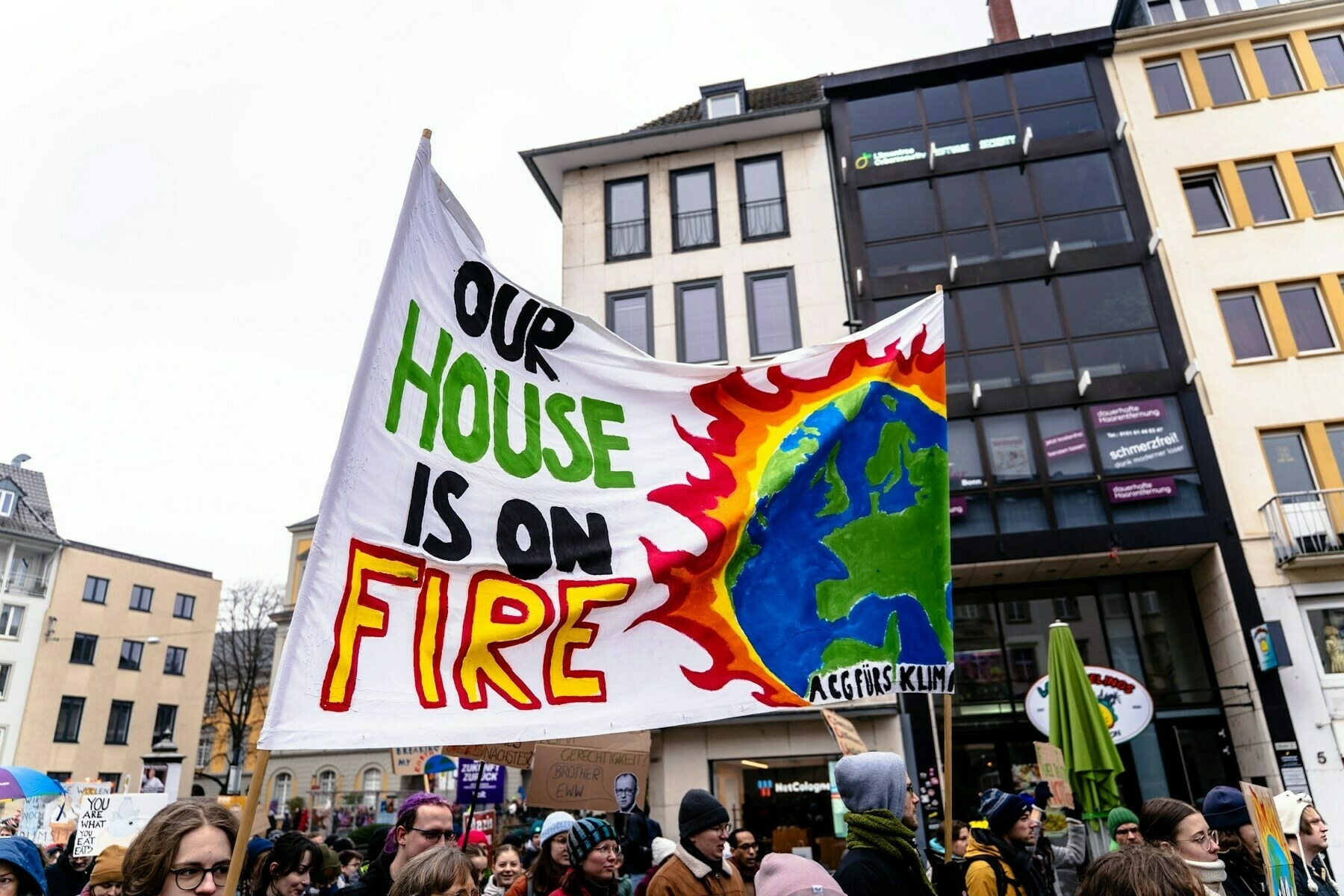
The headline that The Guardian chose to use for this article is “Climate crisis on track to destroy capitalism, warns top insurer.” I mean, if only.
But, of course, the reality is entirely the opposite way around: capitalism is destroying the climate. The only thing that provides some solace in this article is the realisation that people, organisations, and governments will be unable to get insurance, which will in turn put (positive) pressure on Net Zero targets.
At least, I hope that will be the case. Otherwise we’re going to have a Mad Max-style world on fire with lots of poverty and migration.
The world is fast approaching temperature levels where insurers will no longer be able to offer cover for many climate risks, said Günther Thallinger, on the board of Allianz SE, one of the world’s biggest insurance companies. He said that without insurance, which is already being pulled in some places, many other financial services become unviable, from mortgages to investments.
Global carbon emissions are still rising and current policies will result in a rise in global temperature between 2.2C and 3.4C above pre-industrial levels. The damage at 3C will be so great that governments will be unable to provide financial bailouts and it will be impossible to adapt to many climate impacts, said Thallinger, who is also the chair of the German company’s investment board and was previously CEO of Allianz Investment Management.
The core business of the insurance industry is risk management and it has long taken the dangers of global heating very seriously. In recent reports, Aviva said extreme weather damages for the decade to 2023 hit $2tn, while GallagherRE said the figure was $400bn in 2024. Zurich said it was “essential” to hit net zero by 2050.
[…]
No governments will realistically be able to cover the damage when multiple high-cost events happen in rapid succession, as climate models predict, Thallinger [on the board of Allianz SE, one of the world’s biggest insurance companies] said. Australia’s disaster recovery spending has already increased sevenfold between 2017 and 2023, he noted.
[…]
Many financial institutions have moved away from climate action after the election of the US president, Donald Trump, who has called such action a “green scam”. Thallinger said in February: “The cost of inaction is higher than the cost of transformation and adaptation. If we succeed in our transition, we will enjoy a more efficient, competitive economy [and] a higher quality of life.”
Source: The Guardian
Image: Mika Baumeister
The Great Democratization Cycle

This article by Pete Sena is a curious one. On the one hand, he makes some really solid points about ‘vibe coding’ which I’d define as using natural language to create digital artefacts containing code. Most commonly these are web apps, such as the ones I’ve created:
- Album Shelf — make virtual shelves of music albums to set as your video conference background
- Badge to the Future — a Verifiable Credentials issuing and portfolio platform
- Career Discovery Tool — a question-based tool using the Perplexity and Lightcast APIs to find which jobs might be suitable (and less likely to be automated)
Sena goes on, however, to start talking about ‘craft’, as if somehow lots of people being able to manipulate code is going to destroy the industry. It won’t. There will just a lot more people being able to go from idea to execution quickly.
Does that mean that every vibe coded app will be scalable and secure? Obviously not. But this is the worst the technology is going to be, so buckle up, folks! If you’re interested in a potential course I’m going to offer around all this, you can sign up at vibe.horse.
Vibe coding is also just one more example of what I call the Great Democratization Cycle. We’ve seen it in photography as it evolved from darkrooms to digital cameras, which eliminated film processing, to smartphones and Instagram filters, making everyone a high-end “photographer.” The same goes for publishing (from printing presses to WordPress), video production (from studio equipment to TikTok), and music creation (from recording studios to GarageBand on a laptop and now AI tools like Suno on your smartphone).
[…]
This AI-driven accessibility is undeniably powerful. Designers can prototype without developer dependencies. Domain experts can build tools to solve specific problems without learning Python. Entrepreneurs can validate concepts without hiring engineering teams.
But as we embrace this new paradigm, we face a profound question: What happens when we separate makers from their materials?
[…]
Consider this parallel: Would we celebrate a world where painters never touch paint, sculptors never feel clay, or chefs never taste their ingredients? Would their art, their craft, retain its soul?
When we remove the intimate connection between creator and medium — in this case, between developer and code — we risk losing something essential: the craft.
[…]
True innovation often emerges from constraints and deep domain knowledge. When you wrestle with a programming language’s limitations, you’re forced to think creatively within boundaries. This tension produces novel solutions and unexpected breakthroughs.
When we remove this friction entirely, we risk homogenizing our solutions. If everyone asks AI for “a responsive e-commerce site with product filtering,” we’ll get variations on the same theme — technically correct but creatively bankrupt implementations that feel eerily similar.
Source: Peter Suna
Image: BoliviaInteligente
I warned that LLMs would be used for dumb things that would affect lots of people

I’m a daily, but not uncritical, user of generative AI. One of the particularly problematic uses of the technology is of an objective, neutral, and all-knowing arbiter for decision making.
It’s bad enough doing this on a local level, when not many people are involved. It’s much worse when brought in, say, to the benefits system and of course, much much worse when used (allegedly) to dictate punitive tariffs.
In Taming Silicon Valley, I warned that LLMs would be used for dumb things that would affect lots of people.
I rest my case.
Source & screenshot: Marcus on AI
To cope, the brain improvises

My wife’s favourite colour is purple. Which, doesn’t really exist — it’s a nonspectral colour. But then, strictly speaking, no colours exist. Phenomenology FTW.
Our eyes can’t see most wavelengths, such as the microwaves used to cook food or the ultraviolet light that can burn our skin when we don’t wear sunscreen. We can directly see only a teeny, tiny sliver of the spectrum — just 0.0035 percent! This slice is known as the visible-light spectrum. It spans wavelengths between roughly 350 and 700 nanometers.
[…]
Although violet is in the visible spectrum, purple is not. Indeed, violet and purple are not the same color. They look similar, but the way our brain perceives them is very different.
[…]
When light enters our eyes, the specific combination of cones it activates is like a code. Our brain deciphers that code and then translates it into a color.
Consider light that stimulates long- and mid-wavelength cones but few, if any, short-wavelength cones. Our brain interprets this as orange. When light triggers mostly short-wavelength cones, we see blue or violet. A combination of mid- and short-wavelength cones looks green. Any color within the visible rainbow can be created by a single wavelength of light stimulating a specific combination of cones.
[…]
In the middle of the rainbow — colors like green and yellow — the mid-wavelength cones are busiest, with help from both long- and short-wavelength cones. At the blue end of the spectrum, short-wavelength cones do most of the work.
But there is no color on the spectrum that’s created by combining long- and short-wavelength cones.
[…] Purple is a mix of red (long) and blue (short) wavelengths. Seeing something that’s purple… stimulates both short- and long-wavelength cones. This confuses the brain. […]
To cope, the brain improvises. It takes the visible spectrum — usually a straight line — and bends it into a circle. This puts blue and red next to each other.
[…]
Colors that are part of the visible spectrum are known as spectral colors. It only takes one wavelength of light for our brain to perceive shades of each color. Purple, however, is a nonspectral color. That means it’s made of two wavelengths of light (one long and one short).
Source: ScienceNewsExplores
Image: Luke Chesser